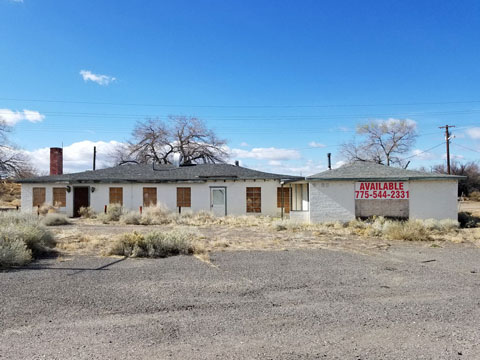Ragtown
(Leeteville)
As the first place with water after crossing the treacherous 40 Mile Desert, Ragtown quickly became an important stop on the Carson Trail, taking its name from the tattered clothes of emigrants strewn about the place. By 1852, it was described as a "collection of tents and canvass [sic] shanties" with food, whiskey, gambling, and hay (Henry Sheldon Anable, Sep. 1, 1852). The only permanent settler, Asa L. Kenyon, established a trading post there in 1854, which operated into the 1860s, serving travelers on the Overland Mail & Stage Route. A flood in 1862 destroyed the settlement and washed away the graves of some 200 emigrants, and for a brief time Ragtown was abandoned.
After discoveries of silver ore at Austin, a new east-west toll road was created with Ragtown revived as a station. A post office was opened, and about four dozen settlers arrived and established farms in the area. In 1869, however, stage travel began a decline with the completion of the Transcontinental Railroad, and Ragtown too dwindled. It continued to hold on as a stopping point along other roads, including the Wadsworth-Columbus Freight Route, before ultimately being superceded by the nearby communities of St. Clair and later Fallon.
In 1895, the new Leeteville post office was opened at old Ragtown, taking the name of farmer James Leete, whose wife Esther served as postmistress. Though it closed after only twelve years, a townsite was laid out in 1921 but doesn't seem to have ever actually developed. Nothing original remains of either Ragtown or Leeteville, though historic markers are located at the site and the latter's name has since been applied to the nearby junction of Highway 50 and Highway 50A where a restaurant operated in the later half of the century.




















